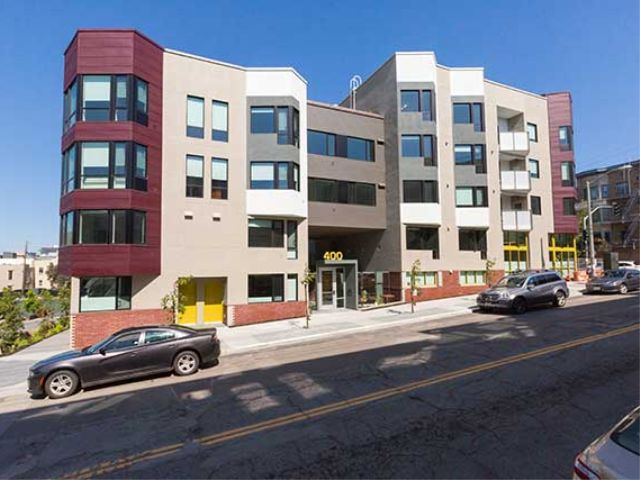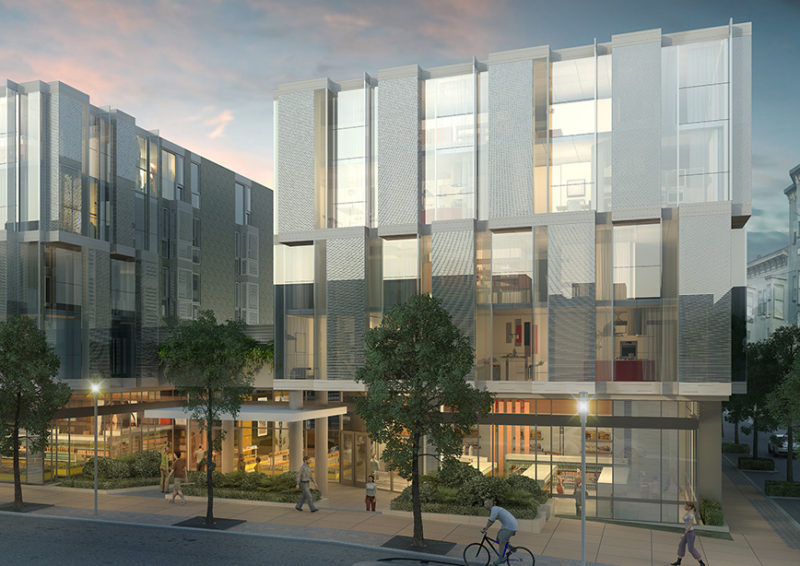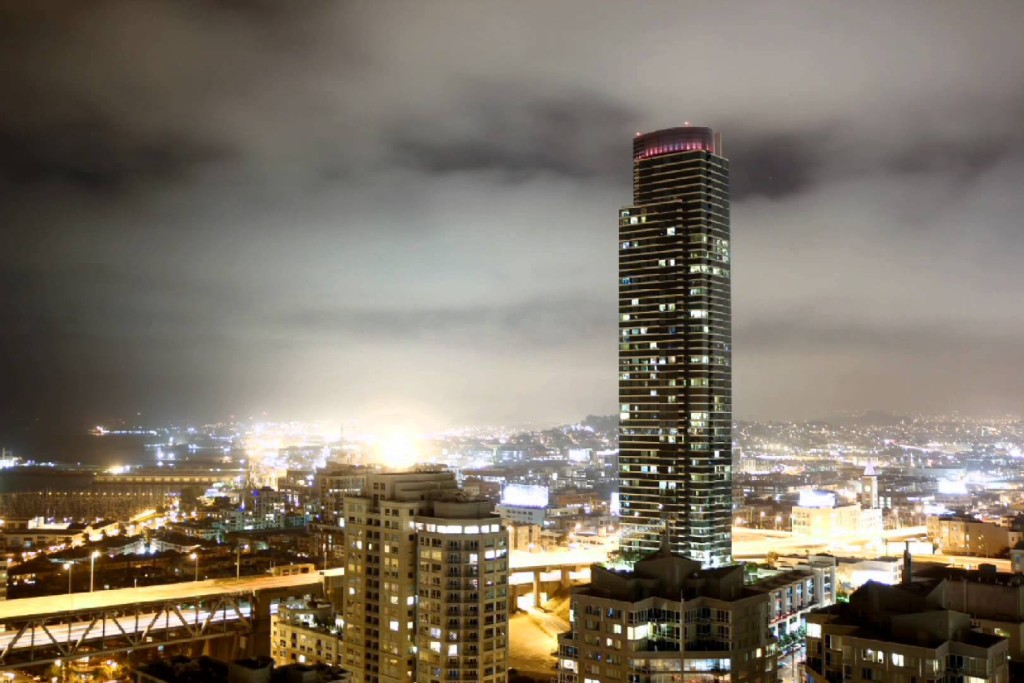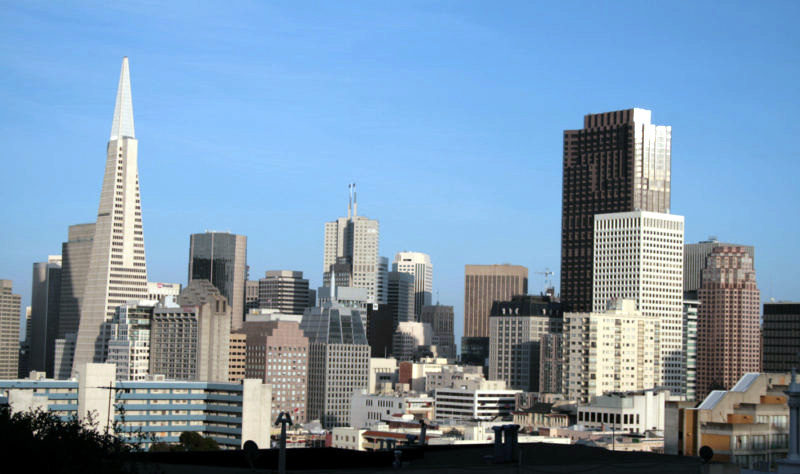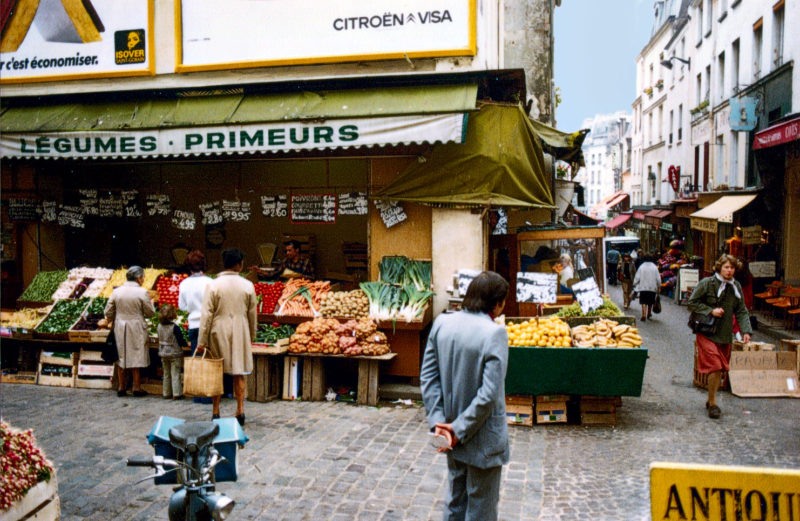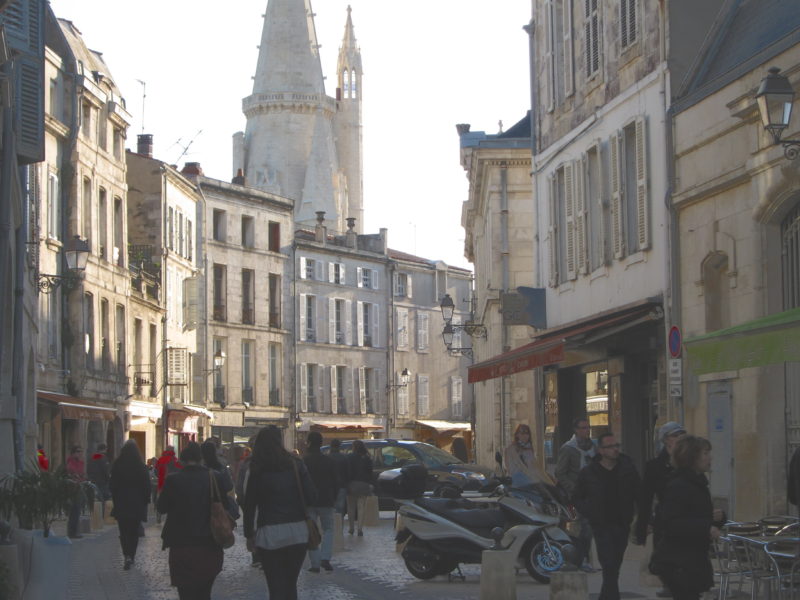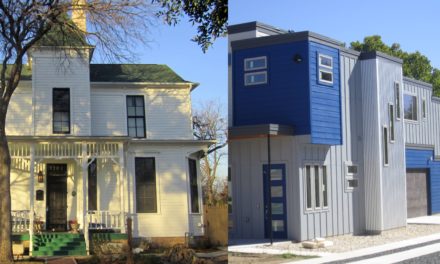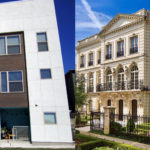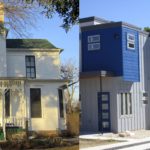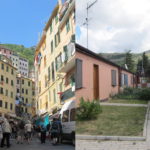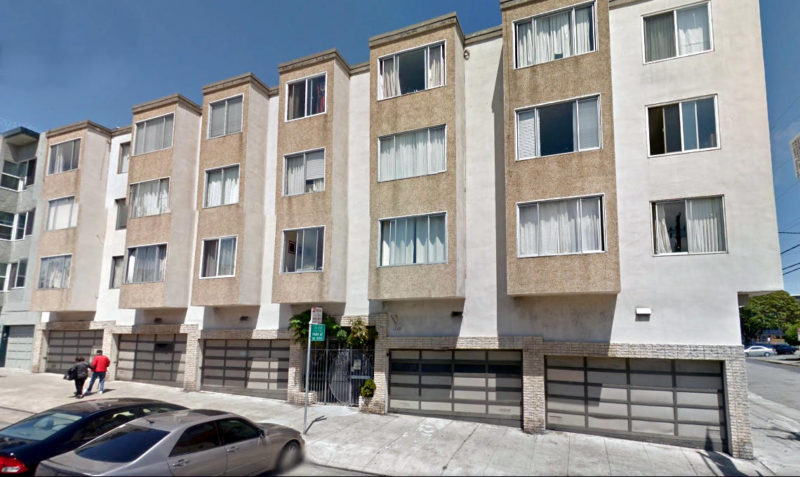 A few years ago, I headed up a small project to gather public support for a proposed parklet. My first target was the residents of a nearby apartment building (pictured above). Standing outside the building’s single entrance I rang each doorbell in turn, roughly 20 households. I waited 30 seconds for each household to respond and tried the next doorbell if nobody answered.
A few years ago, I headed up a small project to gather public support for a proposed parklet. My first target was the residents of a nearby apartment building (pictured above). Standing outside the building’s single entrance I rang each doorbell in turn, roughly 20 households. I waited 30 seconds for each household to respond and tried the next doorbell if nobody answered.
This wasn’t the orgy of signature-gathering I’d hoped for. Few people answered their doorbells, just one resident buzzed me in to talk to her, some folks signed the petition as they entered the building. Eventually, I walked away with just a handful of signatures.
On I strode, turning the corner onto the next block…
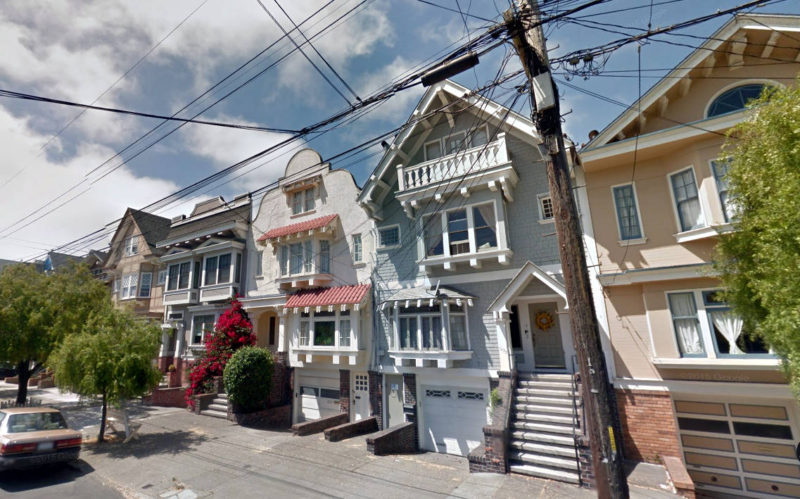 On this street, dominated by single family town homes, my experience was radically different to the apartment building visited earlier. People were opening their doors, engaging with me, and signing my petition. Success was here at last. I went home satisfied.
On this street, dominated by single family town homes, my experience was radically different to the apartment building visited earlier. People were opening their doors, engaging with me, and signing my petition. Success was here at last. I went home satisfied.
This varying success in reaching residents in large buildings versus family homes was hardly an anomaly. Quite the opposite: It’s the norm. Time after time…
| Street 1: Mostly single family homes – EASY to talk to neighbors | Street 2: Mostly apartment buildings – HARD to talk to neighbors |
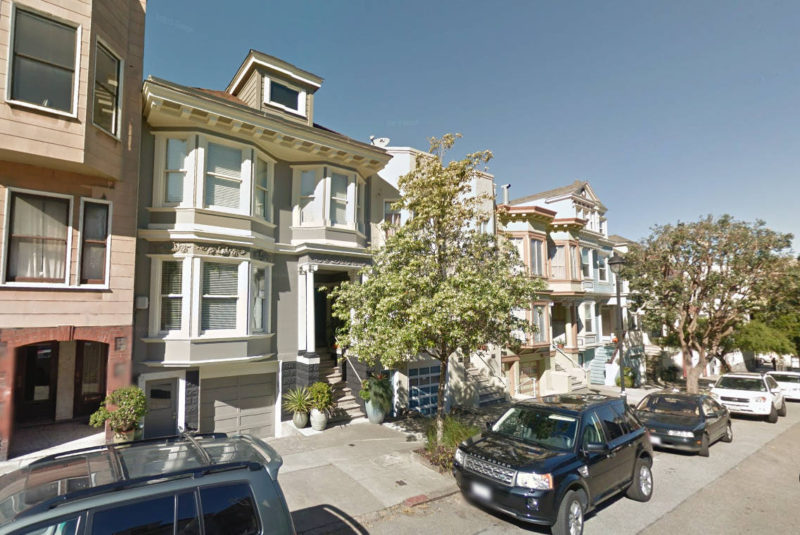 |
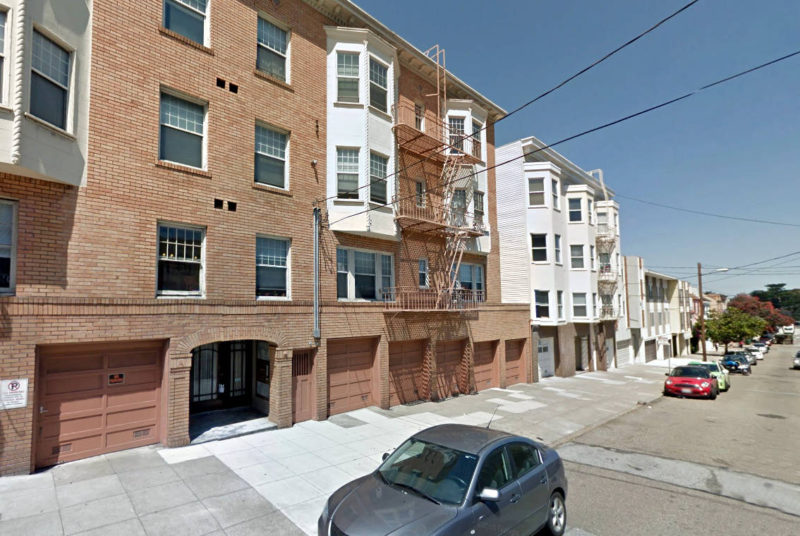 |
It’s not difficult to see what’s going on here. In single family homes, residents can more easily come to the front door. In apartment buildings, residents may have to travel multiple floors to answer the door (which is why intercoms exist to save them the hassle). And there’s also the regularly-overlooked of number of households per front door. The higher the number the less that residents feel the door is “theirs” and the more it becomes just a place for dashing in and out of. There’s much less lingering on the threshold, like in single family homes.
So, what’s being built around San Francisco these days?
If a 20-unit apartment building’s residents are hard to reach, imagine the Biblical struggle it would take to get to the above buildings’ inhabitants. Will they know their neighbors, establish relationships with people in the neighborhood, come out onto the street to catch up? Will their children play outside? Forget it.
It isn’t just “nice” to know our neighbors and for streets to be social extensions of our homes. It’s critical. Healthy societies depend on connected neighbors and community. The alternative is distrust, depression, homelessness, drug abuse, and other ailments of socially fragmented societies.
As concluded by one study:
“[T]he literature suggests that high-rises are less satisfactory than other housing forms for most people, that they are not optimal for children, that social relations are more impersonal and helping behavior is less than in other housing forms, that crime and fear of crime are greater, and that they may independently account for some suicides.”
– The Consequences of Living in High-Rise Buildings, Robert Gifford; Department of Psychology and School of Environmental Studies, University of Victoria
Cities like New York and San Francisco are experiencing a major housing shortage. But before we panic and demand as many tall buildings as possible to ease the shortage, let’s cool down for a minute and weigh the pros and cons of large scale housing, which extend beyond the social problems already discussed:
Advantages:
- More, and more affordable, housing
- Potentially shorter daily trips
- New city revenue from taxes
Disadvantages:
- Social problems: Loneliness, distrust, depression, fear, drug use, suicide, and impeded childhood development
- Windier, darker streets
- Higher per square foot environmental costs of construction
- Psychological impacts on passersby of non-human-scaled architecture
- Luxury high-rise apartments often become second homes for non-locals thus offsetting the additional housing supply
- Harder to maintain and repair buildings
- Tall buildings increase building lot values, creating pressure for ever higher densities and more expensive lots, a vicious cycle that can end in unaffordable housing and eventually corporate bankruptcy
In the 20th century, society let highways and road widenings ravage its cities. And here we are again, inflicting a new era of harm, standing by as buildings get larger and people ever more isolated. Despite the widespread socially horrific results of the last high-rise-building boom in the 1970s, the high-rise is back with a vengeance. We’re focusing solely on density and forgetting there are other issues to consider.
“Is the tall building an anachronism? Does it, like sprawling suburbia and out-of-town shopping malls, seem doomed to belong only to what is increasingly referred to as “the oil interval,” that now fading and historically brief moment when easily extracted oil was abundant and cheap? The answer is probably “Yes”….”
– Harvard Design Magazine: “New Skyscrapers in Megacities on a Warming Globe“; Number 26, Spring/Summer 2007
Isn’t it rather stupid that there are so many cities with wide streets (which are unpleasant and encourage driving, as previously discussed) and tall buildings? We could achieve the same, or higher, density with narrow streets and lower buildings – and the result is far more pleasant. Rue Mouffetard in Paris (photo above) gets it right.
For the sake of argument, let’s accept that many cities need higher density and that we’re probably not going to narrow our streets in the short term. If we must create larger buildings, these are the rules we should put in place:
- Buildings should be no taller, and preferably shorter, than 5 floors; this is the height limit, studies suggest, after which drawbacks start to outweigh benefits
- The ratio of entrances to households should be as close to 1:1 as possible
- The street-facing ground floor should accommodate retail or housing, not garages
 This is in contrast with the apartment building (pictured again above) from my petition drive. Although it only rises to 3 storeys, the building has one entrance for all 20 households, its ground floor is entirely garage space, and there’s little reason to be out lingering on the wide auto-centric street. No wonder the residents are so inaccessible.
This is in contrast with the apartment building (pictured again above) from my petition drive. Although it only rises to 3 storeys, the building has one entrance for all 20 households, its ground floor is entirely garage space, and there’s little reason to be out lingering on the wide auto-centric street. No wonder the residents are so inaccessible.
We must urgently question our obsession with large, monolithic buildings, which deny residents their need for a social environment. It’s impossible to fathom the harm being inflicted upon these people. They deserve better…
Note: This excellent article goes into more detail about tall buildings’ many drawbacks.

